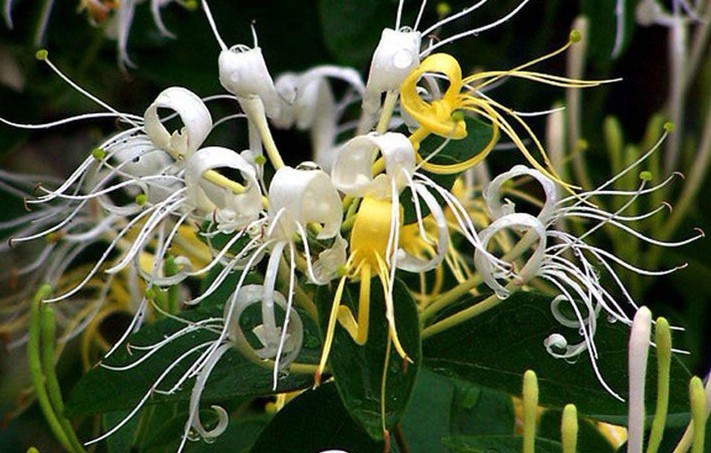Lonicera japonica has been used for thousands of years in China. Now, more than 140 chemical compounds have been isolated; and studies show Lonicera japonica possesses wide pharmacological actions. Meanwhile, it could be used as healthy food, ornamental groundcover, etc.
The Japanese Honeysuckle is a species of honeysuckle native to eastern Asia including China (northern and eastern P.R.China and Taiwan), Japan, and Korea.In the United States Japanese Honeysuckle is classified as a noxious weed in Texas, Illinois, and Virginia, and is banned in New Hampshire. It grows extremely rapidly in parts of America such as southwestern Ohio and is virtually impossible to control in naturalized woodland edge zones due to its rapid spread via tiny fruit seeds. It forms a tall dense woody shrub layer that aggressively displaces native plants. It's also very difficult to manage in semi-wild areas, such as in large rural yards.
A unique collection of 23 natural compounds from Artemisia annua L. F. Macrocephala Pamp
A unique collection of 23 natural compounds from Angelica acutilobac (Sieb. et Zucc.) Kitag.
A unique collection of 47 natural compounds from Cinnamomum cassia Presl
A unique collection of 33 natural compounds from Scutellaria barbata D.Don
A unique collection of 22 natural compounds from Derris robusta
A unique collection of 22 natural compounds from Ziziphus jujuba Mill. var. inermis (Bunge) Rehd.
A unique collection of 38 natural compounds from Eucalyptus globulus Labill.
A unique collection of 21 natural compounds from Caesalpinia sappan L.





